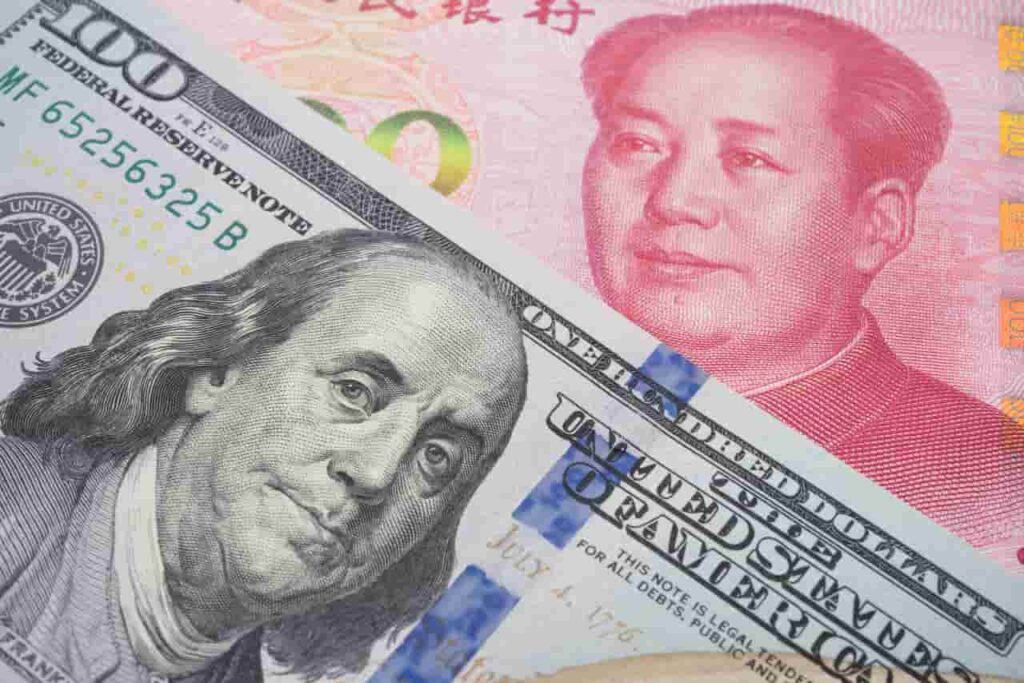By the morning of Thursday, April 10, the Chinese Yuan (CNY) had plunged to its weakest rate against the American dollar (USD) – and most other currencies – since 2007.
Specifically, one USD is, at press time, worth ¥7.35, though the latest move suggests stabilization.
The drop in the CNY’s value directly results from the growing tariff confrontation between the People’s Republic and the U.S.
Why CNY is plunging against USD
President Donald Trump recently engaged in a series of tariff increases against China, which resulted in dues of 125%.
Part of the reason for the extravagant increase is that the East Asian country is relatively unique in unambiguously proclaiming its intent to fight as long as it needs to in the Trump-initiated trade war. Indeed, China increased its own tariffs on American goods to 84% in the second week of April.
Along with the obvious impact of the trade war, the Yuan is being pressured by an expectation that the country’s central bank will devalue the currency to absorb some of the impact.
By press time on April 10, China had taken some steps to slowly bring its currency lower, though the depreciation has been both slow and controlled.
The full extent of the policy – and whether the policy will truly be formulated or not – is uncertain as it could undermine other aspects of the Chinese economy, with its equity markets being a prime potential sufferer.
Who will win the Sino-American trade war?
Generally, though the immediate impact of the escalating trade war – and the tariff pause for all countries other than the PRC – is rather self-evident, there remain numerous questions about how it could alter the global status quo in the long term.
On the one hand, common wisdom dictates that surplus countries cannot win such confrontations, giving the U.S. an obvious advantage.
On the other hand, China’s bustling industry and, more recently, technology have ensured that much of the world is dependent on the People’s Republic. A substantial proportion of the world’s products either come from Shanghai’s docks or have critical components shipped from the country.
Indeed, though many agree with President Trump that reigniting America’s manufacturing is a worthwhile goal and would be a net positive, his approach has been widely criticized in no small part due to the fact that protectionist tariffs make little sense where there is no industry to protect.
Featured image via Shutterstock









